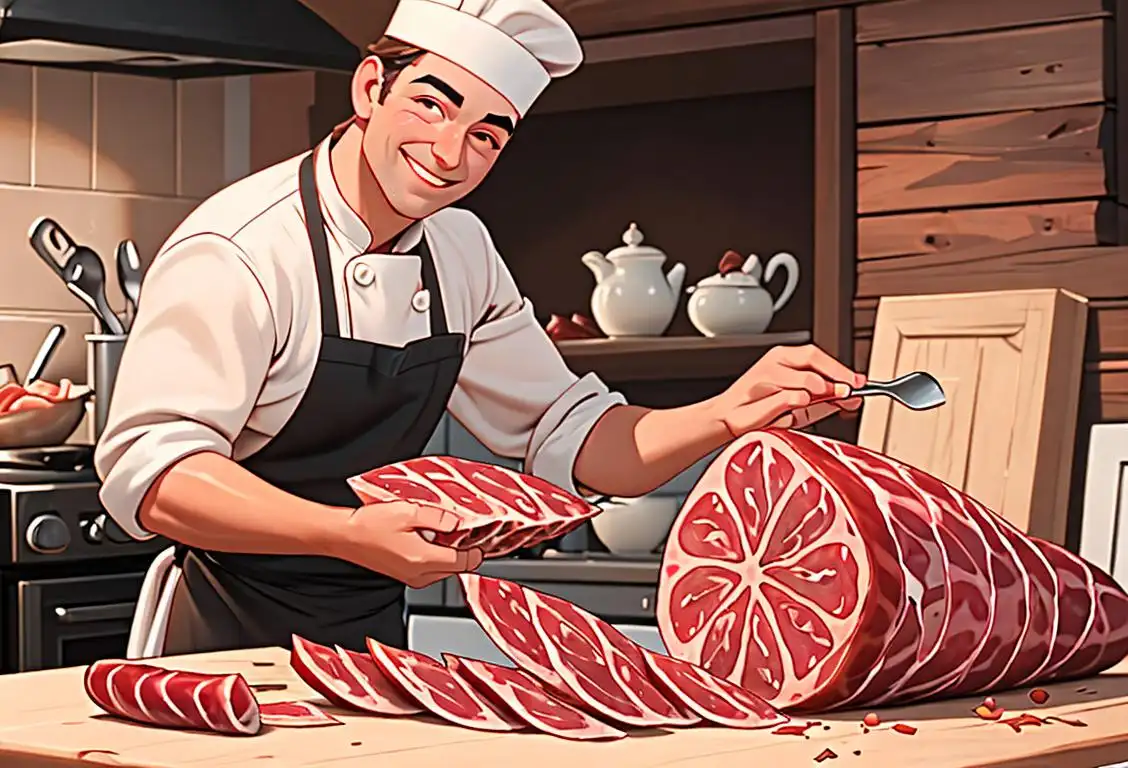National Salami Day

Welcome to the wacky and wonderful world of National Salami Day! Prepare to dive into a deliciously cured adventure filled with mouthwatering meats, savory sandwiches, and a whole lot of salami slicin' fun. So grab your favorite deli knife and let's explore the history and wonders of this culinary celebration!
When is Salami Day?
It's national salami day on the 7th September.
The Origins of National Salami Day
Every year on September 7th, salami lovers around the world come together to celebrate National Salami Day. But where did this delectable observance originate?
The origins of National Salami Day are a little hazy, much like the smoke that wafts up from a freshly cut slab of salami. However, salami has a rich history that dates back centuries. The word 'salami' itself is derived from the Italian word 'salama,' which means 'salted meat.' It's believed that salami-making techniques were brought to the Italian peninsula by the ancient Romans.
Salami quickly became a staple of Italian cuisine, with each region boasting its own unique recipes and flavor profiles. From the spicy goodness of Calabrese salami to the tangy bite of Genoa salami, there's a salami for every taste bud.
History behind the term 'Salami'
15th century
The Origins of Salami
Salami has its roots in Italy and can be traced back to the 15th century. The word 'salami' actually comes from the Italian word 'salume,' which means 'salted meat.' In those days, salami was primarily made from leftover cuts of meat, such as pork, beef, or veal, combined with spices, salt, and various seasonings.
17th century
The Rise of Regional Varieties
During the 17th century, salami started to gain popularity and became a staple in Italian cuisine. Different regions of Italy began developing their own unique varieties of salami, each with its own distinct combination of spices and flavors. This regional diversity gave rise to a vast array of salami types, including Milano, Napoli, Calabrese, and Genoa salami.
19th century
Industrialization and Standardization
The 19th century brought significant advancements in meat processing and preservation techniques. Industrialization led to the mechanization of salami production, making it easier and more efficient to produce. This period also saw the standardization of salami recipes, ensuring consistent quality and flavor across different batches and brands.
20th century
Salami Goes International
In the 20th century, Italian immigrants spread the love for salami to various parts of the world. Salami gained popularity in North and South America, with many regional variations and adaptations emerging. Additionally, the mass production and globalization of food distribution allowed salami to become a beloved deli meat and ingredient in various cuisines worldwide.
Present Day
Continued Popularity and Varied Uses
Today, salami is enjoyed by people from all walks of life. It has become a versatile ingredient in many dishes, including sandwiches, pasta sauces, charcuterie boards, and even pizzas. With its distinct flavor profile and long shelf life, salami remains a timeless classic in the culinary world, loved by countless food enthusiasts around the globe.
Did you know?
Did you know that the world's longest salami was made in the United States? In 2010, a team of salami enthusiasts crafted a salami measuring a whopping 384.86 meters (1,263 feet) long! That's longer than four football fields, or roughly the length of 1272 slices of pizza lined up end to end. Talk about salami goals!Tagged
food funFirst identified
7th September 2015Most mentioned on
7th September 2017Total mentions
492Other days
Bacon Day
Sweet Tea Day
Medal Of Honor Day
Iced Tea Day
Pumpkin Day
Guac Day
Vodka Day
Foundation Day
Cheese Pizza Day
Pina Colada Day









